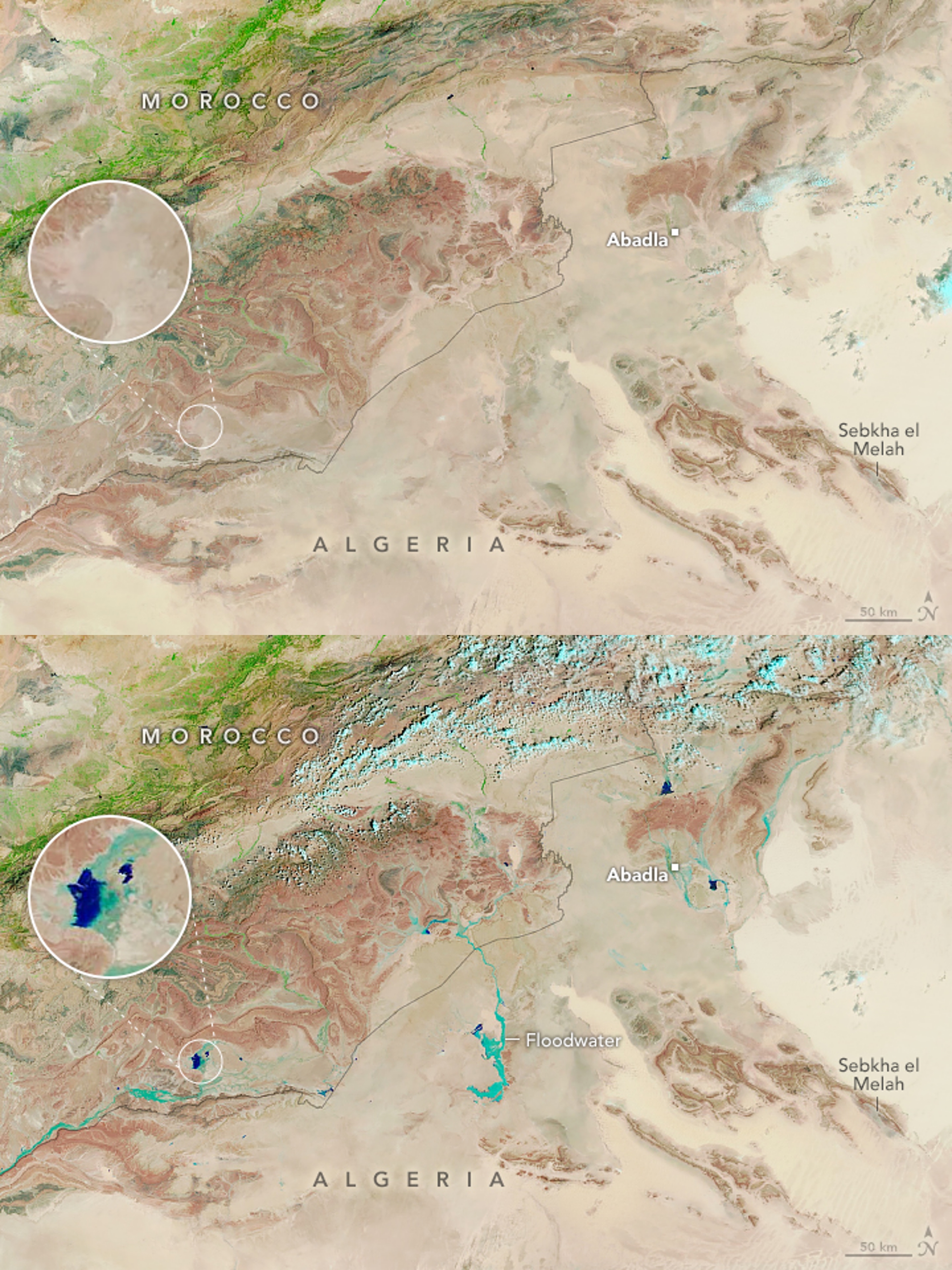The Sahara Desert might normally be one of the driest places on Earth, but September saw the northwest of the region flood for the first time in decades, after an extratropical cyclone brought with it rare heavy rainfall.
According to NASA Earth Observatory, preliminary estimates suggest parts of the Sahara in Morocco, Algeria, Tunisia, and Libya may have received anywhere between tens to more than 200 millimeters of rain over the course of September 7 and 8 – the latter estimate is the same as the region usually experiences across the entire year.
“It’s been 30 to 50 years since we’ve had this much rain in such a short space of time,” Houssine Youabeb of Morocco’s General Directorate of Meteorology, told AP.

Satellite images of the Sahara on August 14, before the rain (top) and on September 10, following the rain (bottom).
Image credit: NASA Earth Observatory image by Michala Garrison, using MODIS data from NASA EOSDIS LANCE and GIBS/Worldview
The result of the rare deluge has been the appearance of lakes among the sand dunes, even in places like Iriqui National Park, where there’s a lakebed that’s been dry for decades. The extent of the flooding has been captured in satellite imagery, although closer to Earth, drones have also captured some pretty dramatic footage of the new lakes.
While those images are quite spectacular, there’s a consequence of the torrential rains that they’re missing – the impact on humans. On the one hand, Morocco has seen six consecutive years of drought, meaning the heavy rainfall could bring some respite.
However, in parts of Morocco and Algeria, the rains also led to flooding that caused serious damage to infrastructure and people’s homes, with over 20 people reported dead as a result.
So, what caused such unusually heavy rains?
“While some degree of rainfall in this region happens every summer, what’s unique this year is the involvement of an extratropical cyclone,” Moshe Armon, a senior lecturer at the Institute of Earth Sciences and the Hebrew University of Jerusalem, told NASA Earth Observatory.
Extratropical cyclones are like other cyclones in that they are large rotating weather systems, but where they differ is they occur at latitudes well away from the equator – usually by more than 30°. They can occur over sea or land; the one that hit the Sahara started forming over the Atlantic Ocean, but also drew some of its water from the moister, equatorial regions of Africa.
There are also concerns that such a cyclone could have longer-term consequences for weather in the region, Youabeb told AP, with the potential for more storms in the future as a result of increased evaporation and moisture in the air.
Source Link: Rare Heavy Rainfall Sees Sahara Flood For First Time In Decades